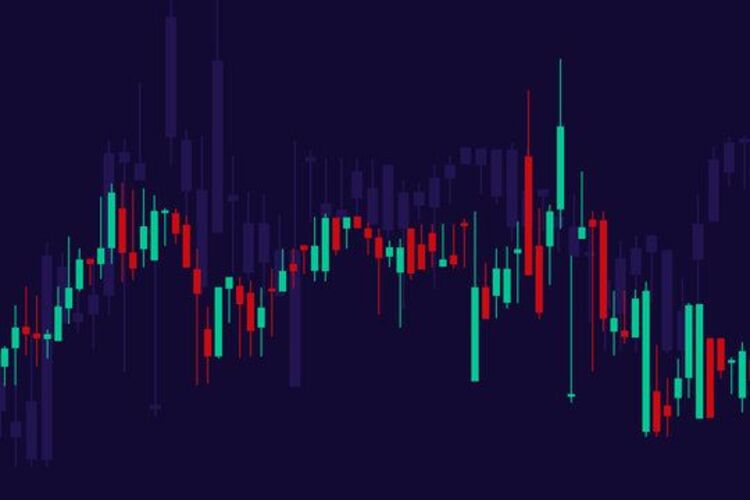Forex day trading is popularly thought of as a means to earn a rapid profit on your money, but it is not for everyone. Before you go into this form of trading, there are a few things you should think about. Forex day trading, like any other trading method, comes with its own set of hazards. Traders employ leverage while trading items like spread bets and CFDs. In a day trading market, overly aggressive use of leverage mixed with volatile currency pairings might result in huge losses. Forex day traders should use stop-loss orders and other risk-management measures to minimize losses.
What is Forex day trading?
Forex day trading is buying and selling currencies within just a single trading day, with positions being closed out at the end of each day and new ones being opened the next. To profit from modest market moves, Forex day traders buy and sell various currency pairings on the same day, or sometimes multiple times on the same day.
Day trading, also known as intra-day trading, is not for the part-time trader since it requires time, effort, devotion, and a unique attitude. It necessitates quick choices and the execution of a vast number of deals for a modest profit each time. It’s usually thought of as the polar opposite of conventional investing methods, which aim to profit from price fluctuations over a more extended period.
Most Important key Factors in Forex Day Trading
Before you begin day trading forex or any other market, remember a few crucial considerations, as the activity can take a lot more time than a traditional buy and hold approach.
Because the focus of investment is on longer-term market movements, everyday fluctuations have minimal influence on the overall picture. When day trading, however, the emphasis is on the elements that might influence intra-day market activity. These are some of them:
- Liquidity
The ease with which and how fast positions may be entered and abandoned determines a market’s liquidity. Day traders require a lot of liquidity since they are likely to execute many deals during the day.
- Volatility
For day traders, the volatility of an asset, or how quickly its price changes, is critical. If substantial volatility is forecast during the day, the moves might provide a plethora of short-term profit chances.
- Trading value
The trade volume of an asset is the number of times it is purchased or sold in a certain period. A large trading volume indicates a lot of interest and might help you find good entry and exit situations.
Forex Day Trading Strategies
When it comes to the foreign currency market, traders must get familiar with various trading methods. Technical analysis, fundamental analysis, or a mix of the two are commonly used in forex trading strategies. This study will be used by Forex day traders to assist them to decide when to purchase and sell currency pairs.
For forex day trading, more than one approach may be required. Traders should be prepared to alter their approach when market circumstances change daily, such as during periods of strong market liquidity. Here are some top Forex Day Trading Strategies:-
- Trend trading
Trend traders try to earn money by researching the direction of asset prices and then purchasing or selling based on the trend’s direction.
Traders would take a long position and buy the asset if the trend is upwards, with prices hitting a series of higher highs. Traders would take a short position by selling if the trend is downward and prices are making a series of lower lows.
Because you may keep your position open as long as the trend continues, trend trading isn’t just for day traders. If you’re only doing intraday trading, you’ll close it before the end of the day.
- Swing trading
Swing trading is all about profiting from short-term price patterns, based on the premise that prices in a trend never travel in one way. Swing traders, on the other hand, seek to benefit from both up and down moves in a shorter period.
Swing traders are more interested in minor reversals in a market’s price movement than trend traders, who aim to profit from long-term market trends. They try to predict these reversals in advance and trade to benefit from smaller market changes.
- Scalping
Scalping is a short-term trading strategy that focuses on having a high win rate while taking tiny but frequent profits. The notion is that you can create a large trading account just as quickly by taking smaller profits repeatedly as you can by executing fewer trades and seeking to lock in earnings over time. Scalping necessitates a disciplined exit plan since losses can quickly wipe out earnings.
Because the reduced profit margins from each transaction are swiftly eroded by overnight funding charges, most scalpers will exit positions before the end of the day.
- Mean reversion
The idea of mean reversion states that prices, as well as other measures of value such as price-to-earnings (P/E) ratios, will always return to the historical mean.
Technical analysis, like moving averages, is used in this method to identify assets whose recent performance has deviated significantly from their historical average. The return to their usual trajectory will then be exploited by mean reversion traders.
- Money flows
The money flow indicator uses volume and price rather than the asset’s price alone to determine if an asset is oversold or overbought.
It determines whether the money flow was positive or negative by comparing the number of deals from the previous day to the current day. Overbought circumstances are indicated by a reading of 80 or above, which signals the trader to sell. A reading of 20 or less, on the other hand, suggests oversold market circumstances and is a buy signal.
Rather than keeping overnight positions, traders typically conduct several forex transactions every day and close them out after the trading day. For day traders, the price changes of liquid currency pairings may present a plethora of chances, therefore they will often seek out currency pairs that are both liquid and volatile.
To begin day trading forex, consumers must first understand that it is a difficult task that needs thorough planning. Traders must be aware of the mix of fundamental and technical drivers of currency markets to have a possibility of profit. You can enroll in the Capital Varsity forex trading course to learn the ins and outs of the forex market as well as forex trading strategies.

